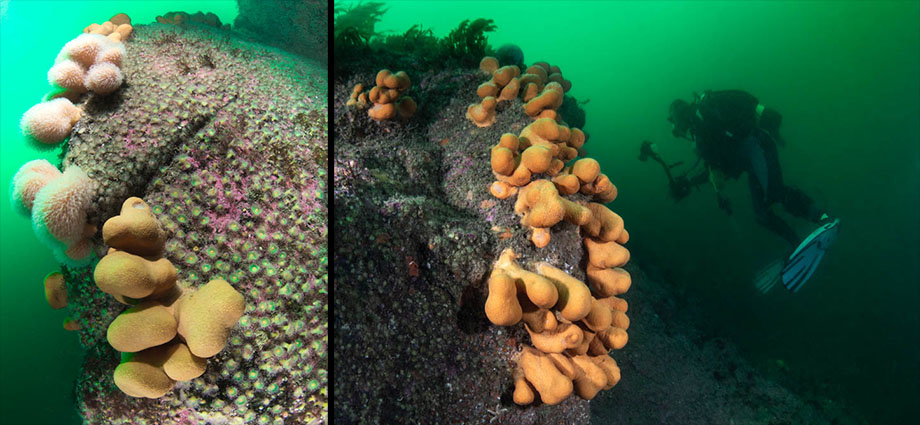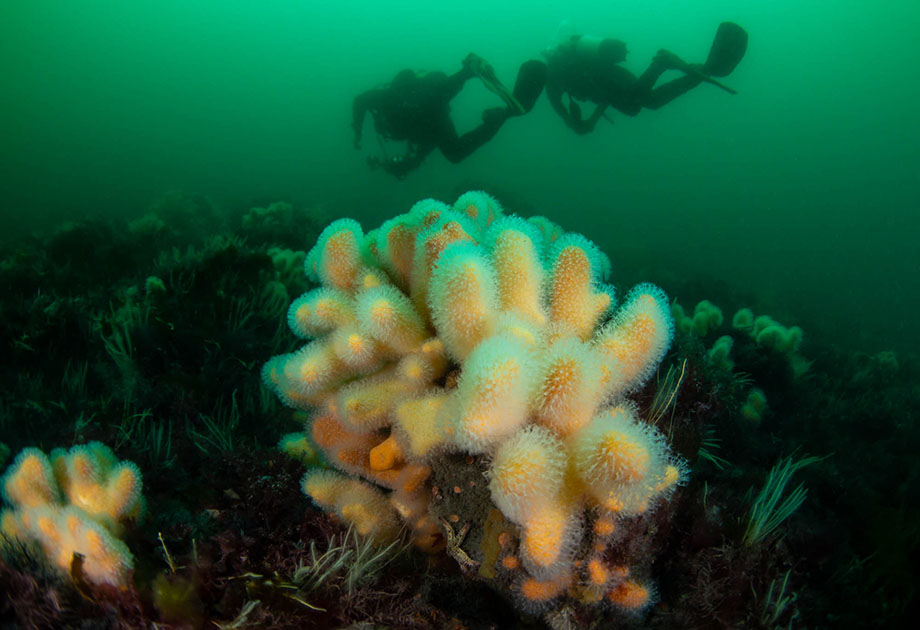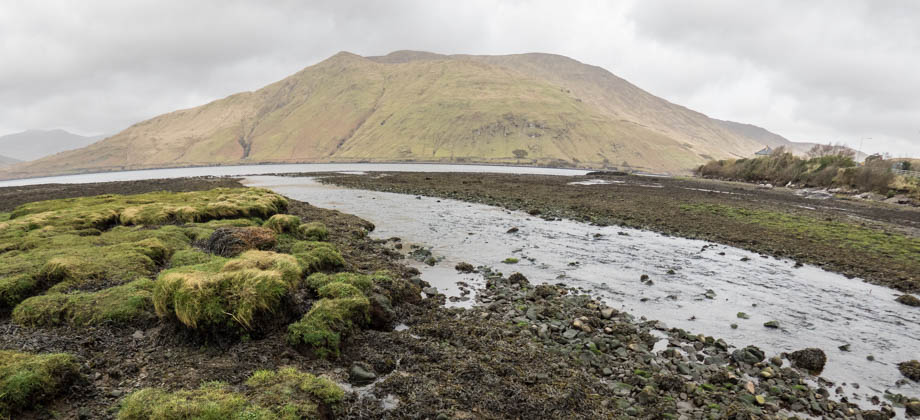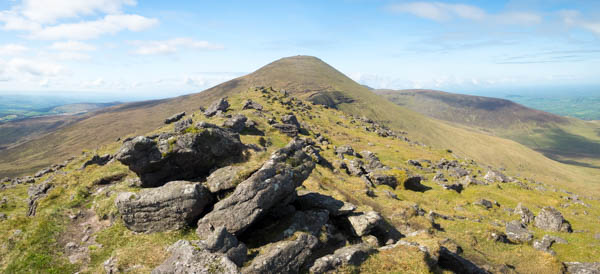Killary Fjord
Dead Man's Fingers
If you are new to diving in European waters, the first thing that might strike you as a little unusual are the orange 'blobs' that jut out of the surrounding rocks. These growths are a type of soft coral that is very common around the coasts of the North Atlantic Ocean. Some can resemble mangled fingers that seem to be reaching upwards, and as such, are quite appropriately known as dead man's fingers (Alcyonium digitatum).
Dead man's fingers are suspension feeders and filter out plankton from the water column by extending white tentacles at the ends of their feeding polyps. These tentacles, as well as those of other cnidarians like them, are embedded with stinging nematocysts, which are structures that contains barbs that, upon contact, are ejected into the tissue of prey. The barbs contain an immobilizing toxin that helps to subdue the prey before they are pulled in by the tentacles for consumption. The extended tentacles dramatically transform the otherwise leathery appearance of dead man's fingers into one that is soft and furry.


Cnidarians generally have two life-cycle stages, which helps to further subdivide the phylum into its three major classes. Sea anemones and corals, like dead man's fingers, belong to the Anthozoa class. Anthozoans only have the sessile polyp stage, which means that they are not free-moving (although there are some exceptions) and are generally oriented with their mouths pointing upward. Scyphozoans, on the other hand, predominantly have the mobile medusa stage, which means that they are free-moving and are oriented with their mouths pointing downward. This class includes the well-known sea jellies, such as the compass sea jelly (Chrysaora hysoscella). [The term 'jellyfish' is a misnomer, as they are not fish. This is the same reason why it is more accurate to call starfish 'sea stars' instead]
Both the polyp and the medusa stages are present in the third major class, Hydrozoa, which includes hydras as well as other colony-forming species. The deadly Portuguese man o' war (Physalia physalis) is probably the most famous member of this class, and it differs greatly, at least physiologically, from single organisms like sea jellies. This is because it is an organism that is made up of an entire colony of distinct parts called 'zooids'. These parts have to function together as an individual organism and are so integrated and dependent on all the other parts that they would not be able to survive if separated. The nematocysts of hydrozoas are also sometimes consumed by other animals as a defensive mechanism.









